| 8943 |
14.3.3 ETA, Rheum. Arthritis |
https://www.shermanabrams.com/?p=91422 |
14.3.3n Protein ETA |
8943 14.3.3 ETA, Rheum. Arthritis 14.3.3n Protein ETA |
| 3429 |
17-Ketosteroids, 24 Hour Urine |
https://www.shermanabrams.com/?p=91424 |
17 KETO |
3429 17-Ketosteroids, 24 Hour Urine 17 KETO |
| 90530 |
2-Hydroxymidazolam |
https://www.shermanabrams.com/?p=91426 |
Udt 2 Hyd |
90530 2-Hydroxymidazolam Udt 2 Hyd |
| 90249 |
30039 - ALPHA-1,3-GALACTOSE IgE |
https://www.shermanabrams.com/?p=91427 |
ALPHA_GAL IgE_SR |
90249 30039 - ALPHA-1,3-GALACTOSE IgE ALPHA_GAL IgE_SR |
| 1730 |
5-Hydroxyindoleacetic Acid, 24 Hr Urine |
https://www.shermanabrams.com/?p=91430 |
Serotonin_24 hr_U |
1730 5-Hydroxyindoleacetic Acid, 24 Hr Urine Serotonin_24 hr_U |
| 90661 |
6-Acetylmorphine |
https://www.shermanabrams.com/?p=91431 |
6-Actlm_Scrn |
90661 6-Acetylmorphine 6-Actlm_Scrn |
| 90535 |
6mam (Heroin Metabolites) |
https://www.shermanabrams.com/?p=91434 |
Udt 6 Mam |
90535 6mam (Heroin Metabolites) Udt 6 Mam |
| 90684 |
6-MAM (Heroin) |
https://www.shermanabrams.com/?p=91435 |
6-MAM_U |
90684 6-MAM (Heroin) 6-MAM_U |
| 91684 |
6-MAM (Heroin) |
https://www.shermanabrams.com/?p=91436 |
6-MAM_S |
91684 6-MAM (Heroin) 6-MAM_S |
| 90708 |
7-AminoClonazepam |
https://www.shermanabrams.com/?p=91437 |
7-Amino_U |
90708 7-AminoClonazepam 7-Amino_U |
| 91708 |
7-AminoClonazepam |
https://www.shermanabrams.com/?p=91438 |
7-Amino_S |
91708 7-AminoClonazepam 7-Amino_S |
| 90528 |
7-Aminoclonazepam |
https://www.shermanabrams.com/?p=91439 |
Udt 7 Amin |
90528 7-Aminoclonazepam Udt 7 Amin |
| 90759 |
7-Hydroxymitragynine |
https://www.shermanabrams.com/?p=91440 |
7-Hdrxymt_U |
90759 7-Hydroxymitragynine 7-Hdrxymt_U |
| 1111 |
Abscess/Discharge Culture |
https://www.shermanabrams.com/?p=91447 |
Ab/Dis Cul |
1111 Abscess/Discharge Culture Ab/Dis Cul |
| 90536 |
Acetyl Fentanyl |
https://www.shermanabrams.com/?p=91451 |
Udt Acetyl |
90536 Acetyl Fentanyl Udt Acetyl |
| 100039 |
Acetylcholine Rec Binding Ab, Serum |
https://www.shermanabrams.com/?p=91452 |
Achr Bi Ab |
100039 Acetylcholine Rec Binding Ab, Serum Achr Bi Ab |
| 4503 |
Acetylcholine Receptor Blocking Ab |
https://www.shermanabrams.com/?p=91453 |
Acety Rece |
4503 Acetylcholine Receptor Blocking Ab Acety Rece |
| 100036 |
Acetylcholine Receptor Modulating Antibodies |
https://www.shermanabrams.com/?p=91454 |
Achr M Ab |
100036 Acetylcholine Receptor Modulating Antibodies Achr M Ab |
| 451 |
ACTH Stimulation Panel For Adrenal Insufficiency |
https://www.shermanabrams.com/?p=91458 |
Acths |
451 ACTH Stimulation Panel For Adrenal Insufficiency Acths |
| 10051 |
Activated Protein C Resistance |
https://www.shermanabrams.com/?p=91461 |
Actprocres |
10051 Activated Protein C Resistance Actprocres |
| 316 |
Alanine Aminotransferase (ALT) |
https://www.shermanabrams.com/?p=91473 |
ALT (SGPT) |
316 Alanine Aminotransferase (ALT) ALT (SGPT) |
| 312 |
Albumin |
https://www.shermanabrams.com/?p=91474 |
ALB |
312 Albumin ALB |
| 362 |
Albumin |
https://www.shermanabrams.com/?p=91475 |
ALB |
362 Albumin ALB |
| 90160 |
Albumin Creatinine Ratio Urine |
https://www.shermanabrams.com/?p=91476 |
Ua A/C Rat |
90160 Albumin Creatinine Ratio Urine Ua A/C Rat |
| 324 |
Albumin Post |
https://www.shermanabrams.com/?p=91477 |
ALB POST |
324 Albumin Post ALB POST |

